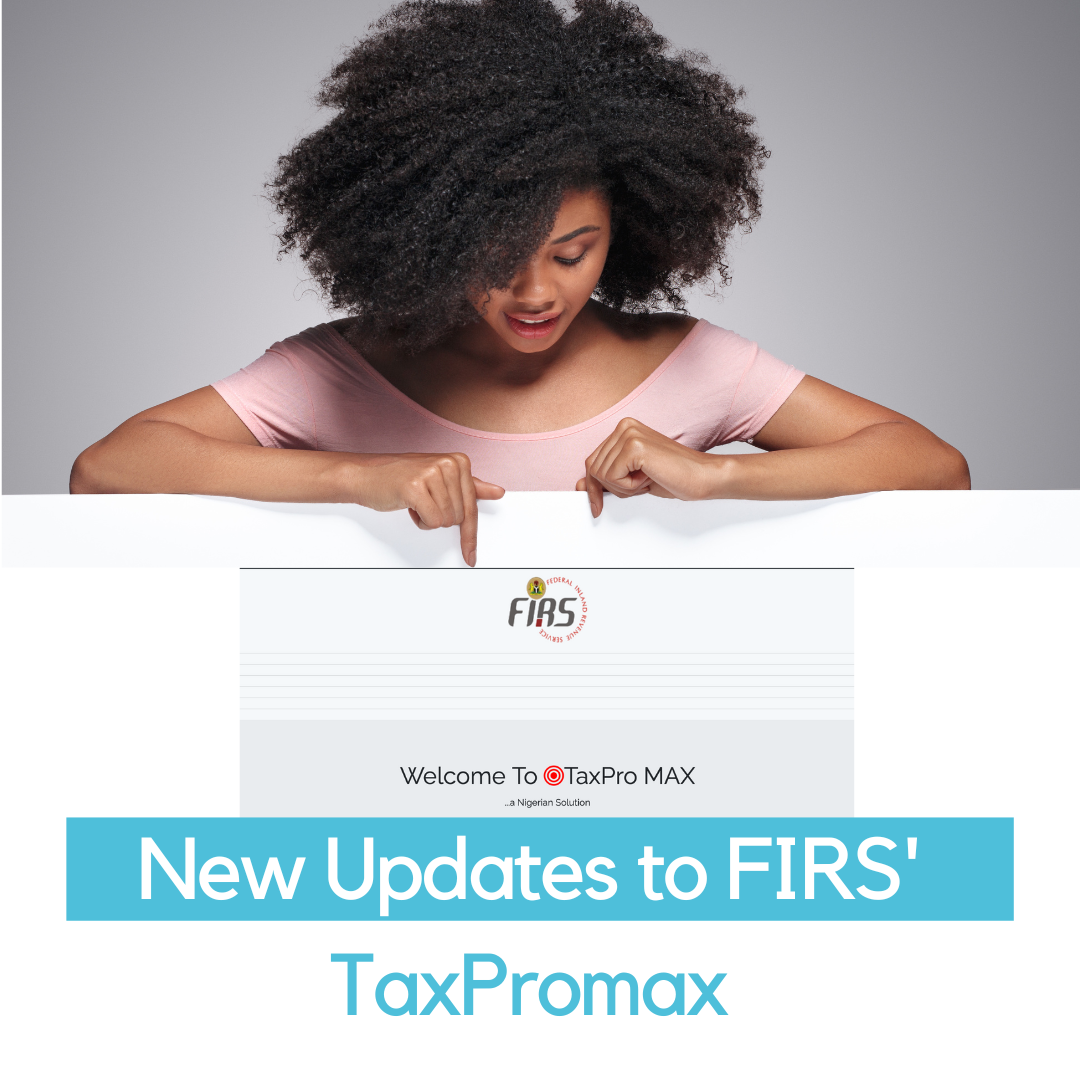The Federal Inland Revenue Service (FIRS) recently updated its TaxProMax tax filing platform, to effect more controls and accountability specifically around the Value Added Tax (VAT) filing process. These changes took effect from this month of April 2023.
The major changes effected include:
1. Changes to Regular VAT Filing and Payment Process: The interphase for VAT filing has been redesigned. It now displays four page links – sales schedule, purchases (input VAT claims page), sales adjustment and VAT returns form.
On the Sales schedule page, the taxpayer is expected to upload a schedule of sales made in the previous month. There is a custom template that can be downloaded from the system and populated by the taxpayer. This sales schedule should contain line by line information on the customer names, their respective Tax Identification Numbers TIN (which the system must validate after upload), the items sold, the item prices (exclusive of VAT), the item descriptions and the VAT statuses (that is, indication as to whether the goods/ services are either VATable, Zero-rated or Exempt, denoted by codes 0,1 and 2 respectively).
Where sales are made to walk in customers, or the sales made are for services, or such that input VAT claim will not be required by the purchaser, the taxpayer does not need to populate the sales schedule with line-by-line details of customers, TIN and sales transactions. Such sales can be lumped together (except perhaps where there are Zero-rated or exempt sales, in which case they should be properly categorized as such), and filed as one line item, with ‘0’ indicated as the TIN.
The new input VAT claim page (or the domestic purchases page) is now designed in such a way that it is pre-populated automatically based on the output tax (or sales schedules) filed by the taxpayer’s suppliers or vendors. This automated pre-load is designed to function as follows:
a). Taxpayers can only claim input VAT deduction on their domestic purchases pre-listed on this page.
b). ALL vendors or suppliers would have already filed their VAT returns as at the time or before a taxpayer can file his/her tax returns to enable the taxpayer claim the input VAT.
c). Where a taxpayer’s suppliers have not yet filed VAT returns, it behoves the taxpayer to reach out to such suppliers and prompt them to file the outstanding VAT returns, to enable the taxpayer claim the applicable input VAT.
c). The vendors or suppliers should be able to track which taxpayer is buying from them for resale, so they can collect their TIN and appropriately upload the sales schedule with the customers’ TIN, to guarantee the reseller the necessary input VAT claim.
d). The vendors should be able to capture correctly, what they sold to the reselling taxpayer, including the descriptions of items, amounts and tax classifications (as either VATable, Zero-rated or exempt), to enable the taxpayer claim the appropriate input VAT.
The updated sales adjustment page can now only be completed with a sales transaction code from a previous VAT return filed on Taxpromax, which the taxpayer may intend to adjust in the current month. The taxpayer is expected to go to the previous return filed (from the ‘Concluded Assessments tab of Taxpromax), open the sales schedule, copy the sales transaction code, return to the sales adjustment page on the current month filing, paste the transaction code, then make the sales adjustment.
The VAT returns form page shows automated calculations of all the VAT results. Input VAT on imported goods can be claimed manually on line 130 (Purchases Imports) of this page (and not on the main purchases or input VAT claim) page.
2. Changes to Claim of Tax Credit on VAT withheld at Source: Similar to the updated process of claiming input VAT, taxpayers will only be granted credit for their VAT deducted at source, only if such VAT had been remitted by the deducting agent.
At a stakeholder webinar which held today, 26 April 2023, the FIRS noted the challenges being posed so far to taxpayers by the system updates, particularly on claim of input VAT and claim of tax credit on VAT withheld at source. It promised to relook the design of the new system in order to possibly find alternative workable solutions for taxpayers. In a show of goodfaith, the FIRS has also granted an extension of due date for filing of current period VAT returns, from 21 April 2023 to 30 April 2023.
Links to the FIRS’ explainer videos on the new updates are shown below for ease of your follow through:
Tutorial on how to file Nil VAT: https://youtu.be/EEnBCpkgLUI
Regular VAT Filing and Payment: https://youtu.be/TJLeVFbwsCQ
Process of Sales Adjustment: https://youtu.be/_rczD8lrKCs
VAT Filing and Input VAT Claim: https://youtu.be/jBrLcXE3mZ0
For more enquiries on how to navigate taxpromax, please reach out to our team by sending an email to clients@vi-m.com.
For detailed assistance with understanding and navigating TaxProMax (and other learning benefits) consider subscribing to our ongoing training programme on TaxProMax. Learn more on https://vi-m.com/taxpromax/struggling-with-taxpromaxour-training-program-can-help/.

